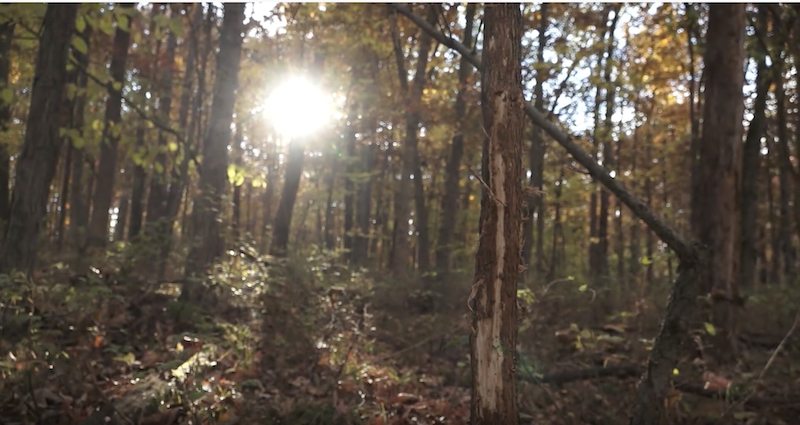Deer hunters eagerly look forward to the rut, but the days leading up to the rut – aka the pre-rut – are just as exciting. In fact, the pre-rut is more exciting, says Scott Prucha, an avid bowhunter from Albia, Iowa.
“During the pre-rut, bucks are seeking (estrous does) much more than they are during the rut,” Prucha said. “Once the rut arrives and does enter estrus, bucks start locking down with them. I always see more deer right before the rut.”

A buck might follow one doe into a smaller area of the woods, or a whole crop of bucks could be checking a large field. Photo Credit: John Hafner
Bucks continue pursuing does during the rut, but Prucha said they usually stay in smaller areas while focused on a hot doe. If you’re not hunting that particular spot, you might not see much. In contrast, the entire woods can seemingly teem with deer during the pre-rut as bucks check fields, cruise corridors, and stray from their home area to find that first estrous doe.
When does the pre-rut start? It depends how you define the term. Some say it includes everything before the rut, from late summer through early fall’s transition. Others say it’s the two to three weeks immediately preceding the rut. Still others peg specific days, such as Oct. 10 or Oct. 15, as the pre-rut’s start.
Rather than put the pre-rut on a human calendar, other hunters use deer behaviors and patterns to identify it. After all, every deer, state and season differs.

There will be a noticeable increase of signs and scrapes this time of year. Photo Credit: ATA
A noticeable increase in sign-post communications, such as rubs and scrapes, can indicate the pre-rut is on. Bucks have long abandoned their bachelor groups, and switched from their summer to fall territories. Their testosterone levels are peaking, and they’re actively searching, following and investigating does, often in daylight.
If you see these activities firsthand or on your trail cameras, it’s time to increase your hunting time. Prucha has bowhunted for 40 years, and hunts whenever possible, but he thinks the pre-rut boosts his odds.
“When the full rut is on, it’s so chaotic,” he said. “Bucks are grunting and chasing, and the does are trying to get away. It’s insane, and it’s really hard to get a buck to stop so you can shoot it. Deer are pretty chill in the pre-rut, so it’s easier to make a better shot.”
He advises bowhunters to focus on food sources, and funnels and saddles in the landscape. And above all, “Don’t get careless,” Prucha said.
Bucks focus on marking their territory, and checking for does ready to breed, but that doesn’t mean they ignore potential threats from bears, wolves, coyotes and humans. Bowhunters must be stealthy, call strategically, and account for the wind. Keep practicing with your bow throughout the season, too.
And if you don’t see deer, don’t get discouraged. Adapt your strategies and keep monitoring deer behavior to identify patterns. Take notes and keep records to unlock insights for next week and beyond.